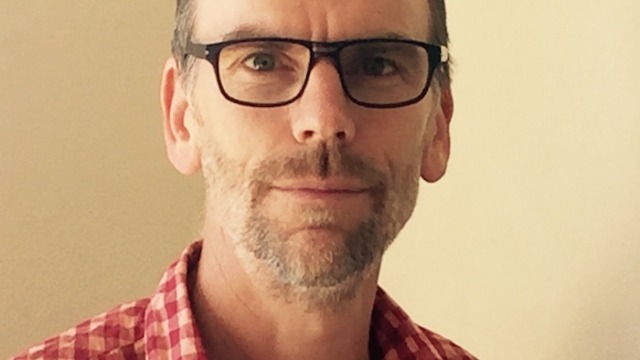Introducing Geoff Hinchcliffe, ANU Design
SHARE

Interview by Anna Madeleine
For alumnus Geoff Hinchcliffe, returning to the ANU School of Art as a senior lecturer in Design is about much more than just changing jobs.
“The culture of this art school is atypical. It’s not a normal nine to five job – the people are really committed,” Hinchcliffe says.
“This project has something to do with that culture. I want to contribute to it, and I want to keep the art school alive and kicking and growing.”
Hinchcliffe will be running the new Design program along with colleague and collaborator Mitchell Whitelaw. His teaching and research is informed by an incredibly diverse background: Hinchcliffe works with a combination of material and digital practices ranging from graphic design, to printed objects (including short run books and zines), to experimental areas around the junction of web pages and print. Now, however, his primary research focus is on working creatively with data.
“Some of the work that I do is fairly pragmatic and practical, very much in the design camp of trying to make things that are accessible and useful,” Hinchcliffe says.
“But I also stray into some pretty creative exploration around that too, where the intention is to make people think and question their relationship to the work or to the data itself.”
How material practices are integrated into the computer space is a main concern for Hinchcliffe. It’s also a driving motivation for the new degree, which acknowledges that new processes of making will change and inform approaches to design.
“Mitchell and I as practitioners still situate making right at the heart of it. There are some benefits – even if you’re working digitally – to getting your hands dirty and not relegating design as a high level conceptual practice that’s separated from production.”

Geoff Hinchcliffe, Fund Trove
Hinchcliffe’s background in graphic design, Melbourne’s music scene, TV, and in internet companies during the dot-com bubble all feed into his interest in this area. Over the last 15 years as an academic, practice-based research has led him to understand how a design practice can constitute scholarly research, and to recognise its potential for new practitioners and researchers in this field.
“There’s still a massive area that needs further contribution and exploration,” Hinchcliffe says.
“I don’t think it’s a known quantity; there’s so much scope for contribution and it invites so much interesting practice. Particularly as it steps into design, engaging with the world is part of the research practice and that’s really exciting. You can do stuff not necessarily just in a bubble, but in the world with people and audiences.”
Hinchcliffe highlights two exciting areas for potential in the Design program – utilising materials, and a broadening of design to address current, real world events.
“Maybe we need to reform ourselves – not around narrow vocations, but around ideas, problems, and issues. Let them be the centre rather than a vocational approach which is going to influence what your response will be. It’s big, it’s really ambitious, and I don’t know that we can answer it, but in amongst all that is what motivates me to do it.”
This is where the more traditional disciplines that ANU School of Art excels at come into play.
“There’s this absolutely amazing and unique opportunity to work with people who are the bees knees in terms of material practice – to bring the digital into that space would be wonderful, for both camps,” Hinchcliffe enthuses.
Hinchcliffe’s interest in the interweaving of the digital with the material can be seen in many of Hinchcliffe’s projects – he’s engaged with the data collections of cultural institutions such as the State Library of Queensland, the National Gallery of Australia, and the Museum of Australian Democracy. In 2016, he will be completing a fellowship at the DX Lab at the State Library of NSW, working with data relating to the K-12 sector of NSW schools, and researching ways to improve the way that people interact with it.
So what can prospective students expect from the Design Degree?
“They can expect that we’ll be constantly on our toes thinking of the inventive,” Hinchcliffe says.
“This is genuinely my passion so that’s what I hope to bring to the course. This is not a static idea, it’s about what is happening in design right now and we’re going to create a course that reflects that really exciting and tumultuous area.”











